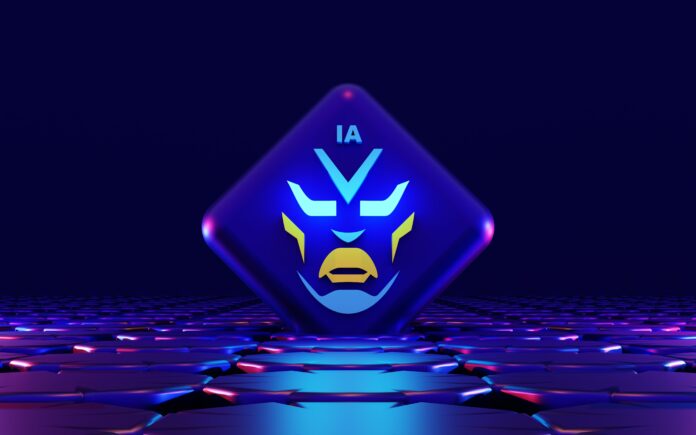Originality AI, also known as AI-generated originality, is a rapidly evolving field that explores the capabilities of artificial intelligence to generate novel and creative content. It encompasses a range of applications, from generating unique pieces of art and music to assisting with innovative problem-solving and ideation processes. The emergence of originality AI has opened up new possibilities for human creativity and has sparked both excitement and debate within various industries. In this article, we will delve into the world of originality AI, exploring its fundamental concepts, potential applications, ethical considerations, and future implications.
Originality AI is built upon the foundation of machine learning and deep neural networks. By training these models on vast amounts of existing data, such as images, texts, or music, they can learn the patterns and structures that define a particular domain. Once trained, the AI systems can generate new content that aligns with the learned characteristics, but possesses a level of novelty and originality. These systems have the potential to push the boundaries of human creativity by providing alternative perspectives, exploring uncharted territories, and generating fresh ideas that may not have been conceived otherwise.
1. Creativity Amplification: Originality AI has the capacity to amplify human creativity by offering novel suggestions, augmenting existing ideas, and inspiring new concepts. It can act as a creative collaborator, assisting artists, writers, musicians, and designers in their creative processes.
2. Innovative Problem-Solving: Originality AI can aid in solving complex problems by generating fresh perspectives and alternative solutions. By exploring unconventional approaches and patterns, AI systems can assist in overcoming mental blocks and expanding the possibilities for innovation.
3. Artistic Expression: Originality AI has shown promise in the realm of artistic expression, generating unique paintings, sculptures, music compositions, and other creative works. Artists can use AI as a tool to explore new artistic styles, experiment with different techniques, and uncover hidden artistic potential.
4. Content Generation: With the rapid growth of digital media, originality AI can help in generating diverse and engaging content across various platforms. From writing articles and blog posts to creating videos and advertisements, AI systems can assist in producing content that captures attention and resonates with audiences.
5. Scientific Discovery: Originality AI holds the potential to contribute to scientific breakthroughs by exploring vast datasets, identifying patterns, and generating new hypotheses. It can aid researchers in uncovering hidden connections, facilitating drug discovery, and advancing various scientific fields.
6. Ethical Considerations: As with any emerging technology, originality AI raises ethical concerns. Questions regarding intellectual property, plagiarism, and attribution become crucial when AI-generated content is involved. Striking a balance between the originality of AI systems and respecting the rights and contributions of human creators is an ongoing challenge.
7. Bias and Fairness: AI models are prone to inheriting biases from the data they are trained on, which can manifest in the generated content. Ensuring fairness and addressing biases in originality AI systems is essential to prevent perpetuating societal inequalities and stereotypes.
8. Human-AI Collaboration: Originality AI is most powerful when it is used in collaboration with human creators. The interplay between AI-generated content and human creativity can lead to synergistic outcomes, where AI enhances and complements human abilities.
9. Intellectual Property and Copyright: The use of originality AI raises complex questions regarding intellectual property rights and copyright. Determining the ownership and authorship of AI-generated content poses legal challenges that require thoughtful consideration and updated legislation.
10. Future Implications: Looking ahead, originality AI is expected to continue advancing rapidly, presenting both opportunities and challenges. It has the potential to revolutionize creative industries, transform problem-solving approaches, and reshape the way we perceive human creativity and AI’s role in it.
As the field of originality AI progresses, it is essential to maintain a critical dialogue between creators, researchers, policymakers, and society at large. It is necessary to establish guidelines and ethical frameworks to navigate the implications of originality AI effectively. Collaboration between experts in AI, intellectual property law, ethics, and the creative industries can help shape responsible practices and ensure a fair and inclusive future.
One of the key considerations in the development and use of originality AI is striking the right balance between novelty and familiarity. While AI-generated content aims to be original, there is a fine line between creating something genuinely new and producing content that closely resembles existing works. Finding the sweet spot where AI systems can generate innovative content while avoiding the risk of plagiarism or infringement is a significant challenge.
To address concerns related to bias and fairness, it is crucial to ensure that AI models are trained on diverse and representative datasets. By including a wide range of perspectives and avoiding skewed training data, originality AI can produce content that is more inclusive and avoids reinforcing existing biases. Ongoing research and development efforts are needed to improve the fairness and accountability of AI systems, ensuring that they are unbiased and aligned with societal values.
Collaboration between humans and AI systems is a key aspect of originality AI’s future. Rather than replacing human creativity, AI can be seen as a tool that augments and inspires human creators. This symbiotic relationship can lead to innovative and unexpected outcomes. By embracing this collaboration, creators can harness the power of AI to explore uncharted territories, experiment with new ideas, and push the boundaries of their artistic and creative endeavors.
The legal landscape surrounding originality AI and intellectual property rights is another significant area of concern. Determining the ownership and authorship of AI-generated content raises complex questions. Copyright laws may need to evolve to account for AI’s involvement in the creative process. Finding the right balance between protecting the rights of human creators and acknowledging the role of AI systems in content generation is essential for fostering innovation while respecting intellectual property.
Looking to the future, originality AI holds immense potential. As the technology continues to advance, we can expect to see increasingly sophisticated AI systems capable of generating even more original and creative content. From personalized recommendations and unique user experiences to AI-generated art exhibitions and music concerts, the possibilities are vast. However, it is crucial to remain vigilant about the ethical implications and societal impact of originality AI, ensuring that its development and use align with human values and serve the common good.
Originality AI, also known as AI-generated originality, is a rapidly evolving field that explores the capabilities of artificial intelligence to generate novel and creative content. It encompasses a range of applications, from generating unique pieces of art and music to assisting with innovative problem-solving and ideation processes. The emergence of originality AI has opened up new possibilities for human creativity and has sparked both excitement and debate within various industries.
At its core, originality AI leverages machine learning and deep neural networks to learn patterns and structures from vast amounts of existing data. By training these models on images, texts, or music, AI systems can acquire knowledge about a particular domain and generate new content that aligns with the learned characteristics. However, what sets originality AI apart is its ability to introduce a level of novelty and originality, pushing the boundaries of human creativity.
Creativity amplification is one of the primary benefits of originality AI. It acts as a creative collaborator, assisting artists, writers, musicians, and designers in their creative processes. By offering novel suggestions, augmenting existing ideas, and inspiring new concepts, originality AI enhances and expands human creativity. It provides alternative perspectives and explores uncharted territories, leading to fresh ideas that may not have been conceived otherwise.
Originality AI also plays a vital role in innovative problem-solving. By generating fresh perspectives and alternative solutions, AI systems can assist in overcoming mental blocks and expanding the possibilities for innovation. They explore unconventional approaches and patterns, enabling individuals and teams to discover breakthrough ideas and solutions to complex problems.
The field of artistic expression has witnessed the transformative power of originality AI. AI-generated content has entered the realms of paintings, sculptures, music compositions, and other creative works. Artists can use AI as a tool to explore new artistic styles, experiment with different techniques, and uncover hidden artistic potential. This symbiotic relationship between human creativity and AI-generated content has resulted in captivating and boundary-pushing artistic experiences.
Moreover, originality AI has become a valuable asset in content generation across various platforms. In the digital age, the demand for engaging and diverse content is soaring. AI systems can assist in producing articles, blog posts, videos, and advertisements that capture attention and resonate with audiences. They provide creators with a wealth of possibilities, helping them meet the ever-growing content needs while maintaining originality.
Originality AI is not confined to the realms of art and content creation; it extends its reach to scientific discovery as well. By exploring vast datasets, identifying patterns, and generating new hypotheses, AI systems aid researchers in uncovering hidden connections and advancing various scientific fields. From drug discovery to climate modeling, originality AI has the potential to contribute to scientific breakthroughs and accelerate progress.
However, as with any emerging technology, originality AI raises ethical considerations. Intellectual property, plagiarism, and attribution become crucial when AI-generated content is involved. Striking a balance between the originality of AI systems and respecting the rights and contributions of human creators is an ongoing challenge. Legal frameworks need to be updated to address the ownership and authorship of AI-generated content, ensuring fair attribution and protection of intellectual property rights.
Another ethical concern is the presence of bias in AI systems. These models can inherit biases from the data they are trained on, which can manifest in the generated content. Ensuring fairness and addressing biases in originality AI systems is essential to prevent perpetuating societal inequalities and stereotypes. Efforts should be made to diversify training data and develop techniques that mitigate biases, ensuring the ethical and responsible use of originality AI.
In navigating the realm of originality AI, collaboration between humans and AI systems is key. Rather than replacing human creativity, AI can be seen as a tool that augments and inspires human creators. This collaboration leads to synergistic outcomes, where AI enhances and complements human abilities.
In conclusion, originality AI represents a groundbreaking development in the intersection of artificial intelligence and human creativity. Its ability to generate novel and innovative content opens up new possibilities for artists, problem-solvers, and researchers. However, it also poses challenges related to ethics, bias, and intellectual property. By fostering collaboration between AI and human creators, addressing biases, and establishing responsible guidelines, we can harness the power of originality AI to inspire, augment, and advance human creativity in the years to come.


















